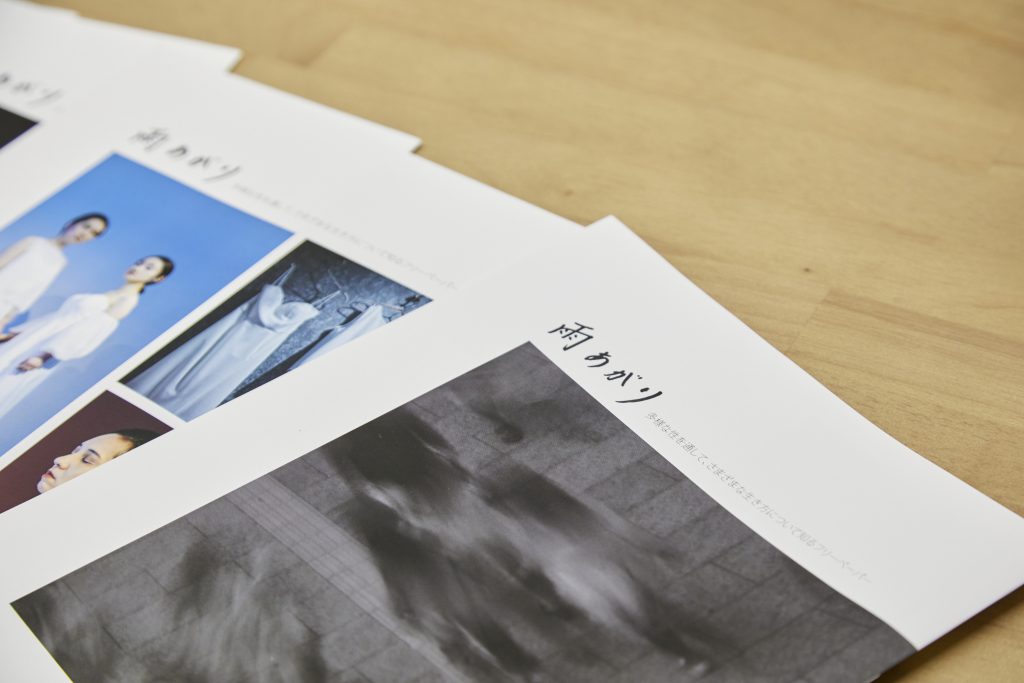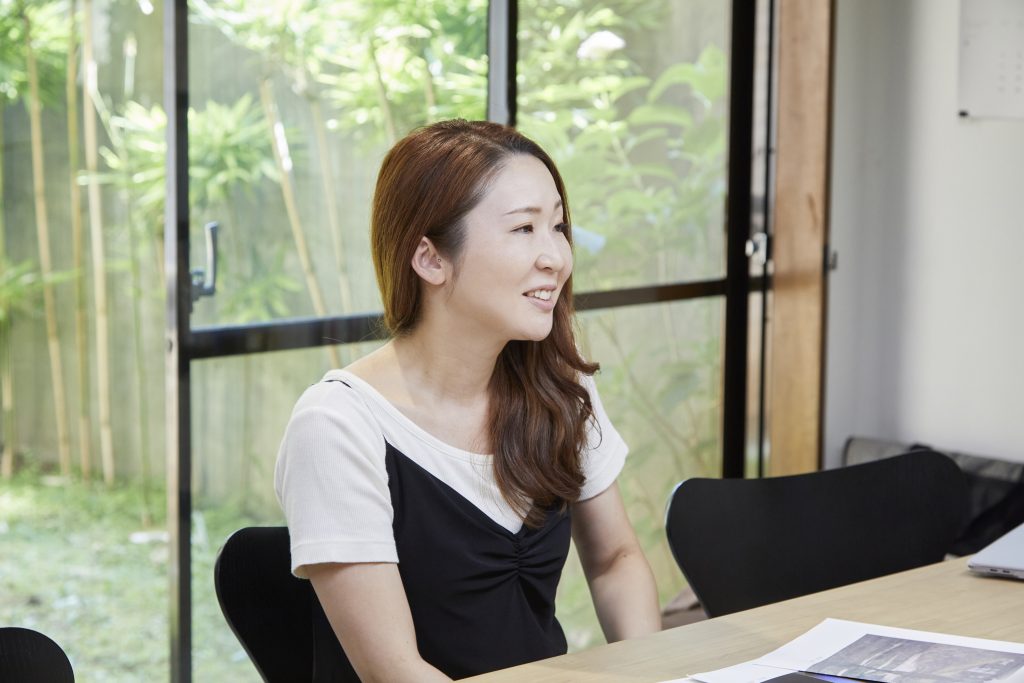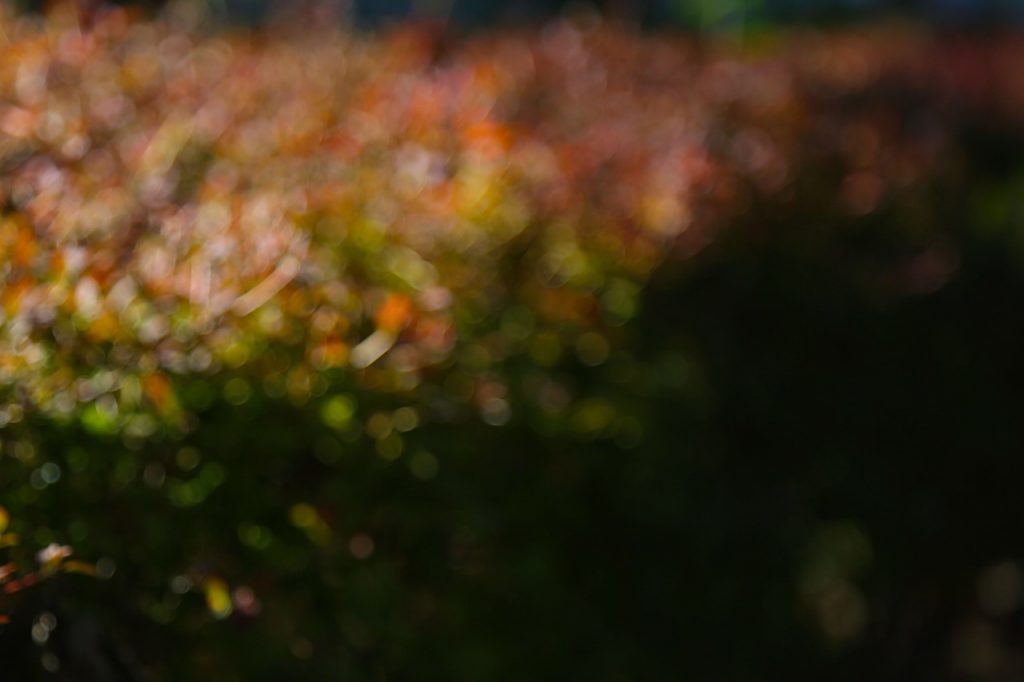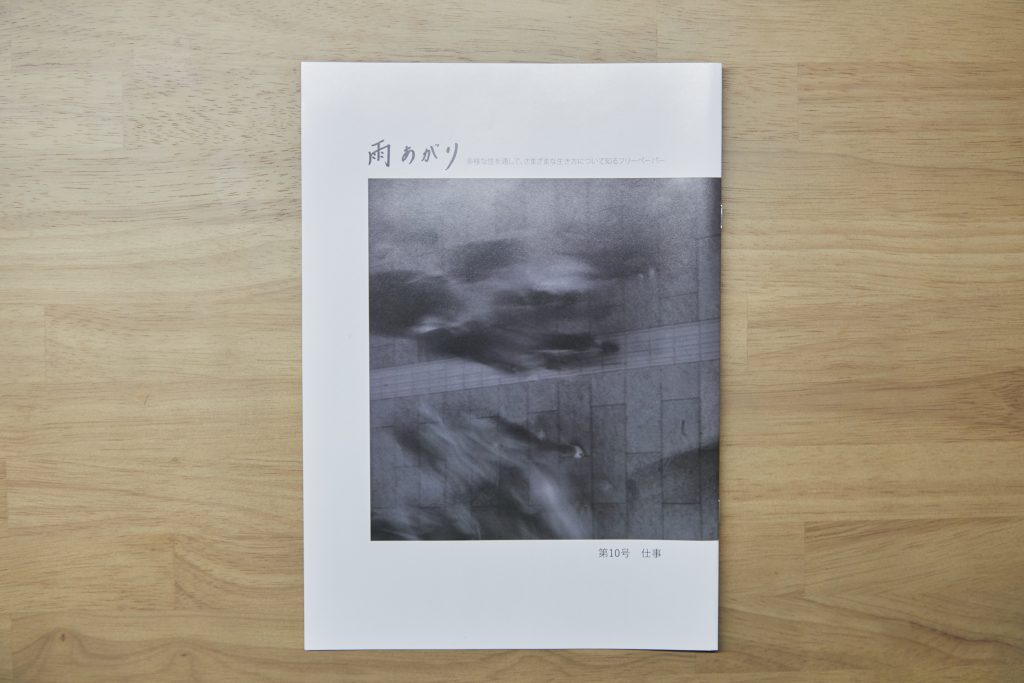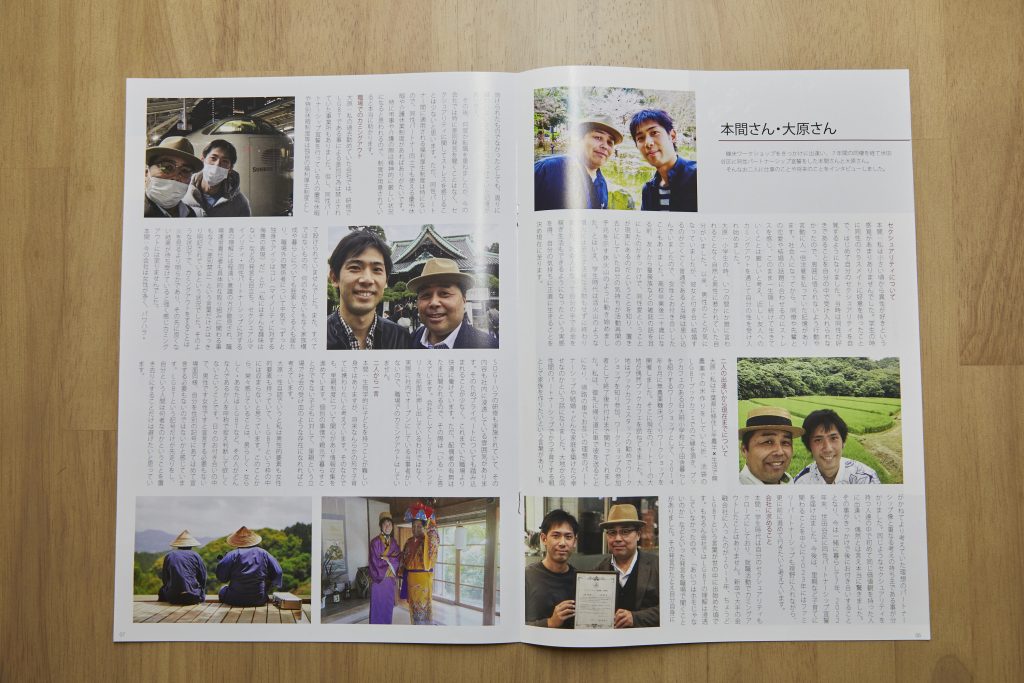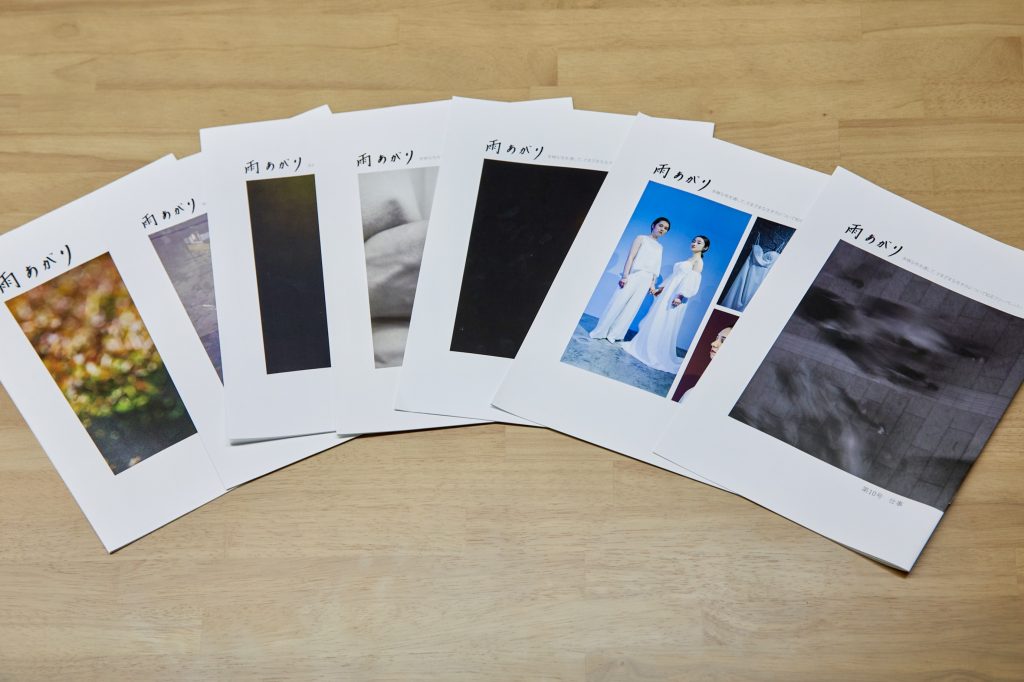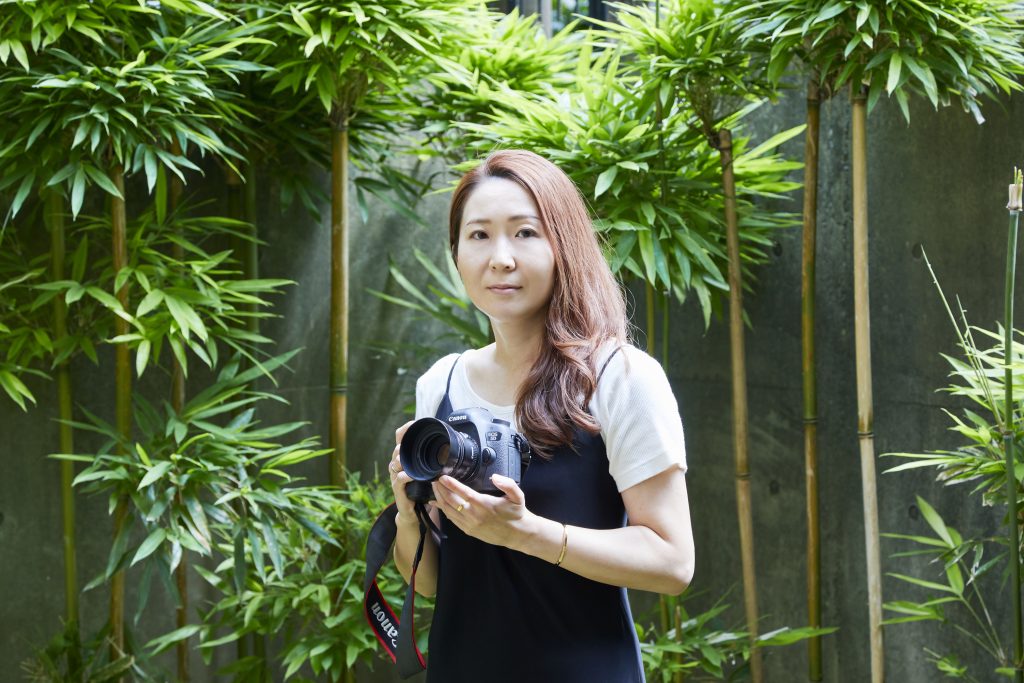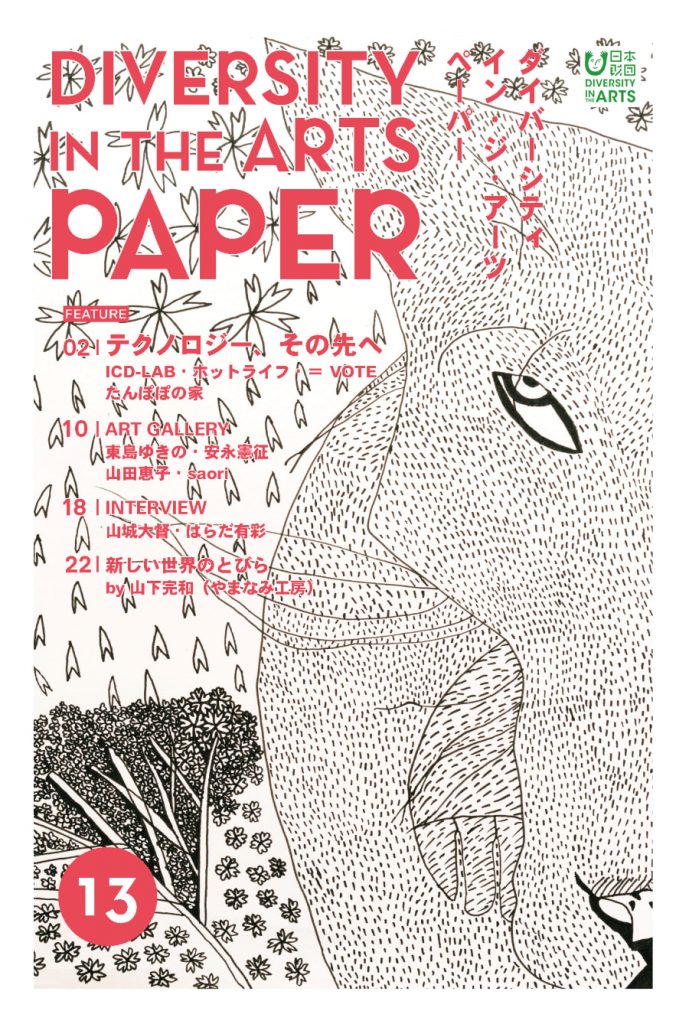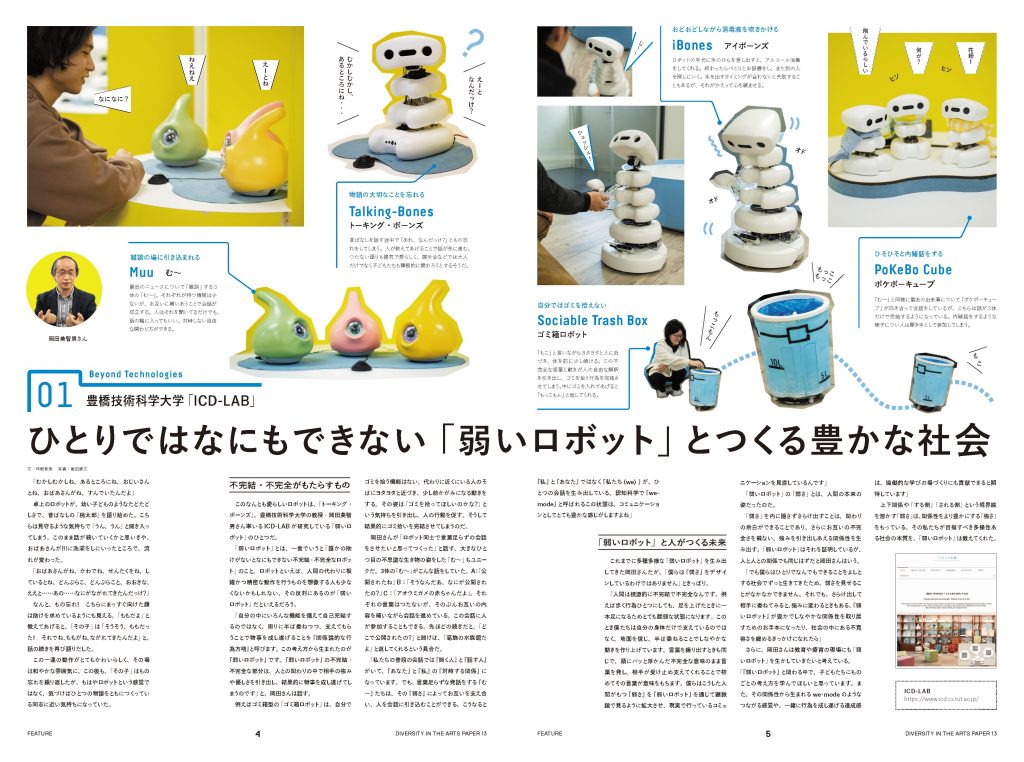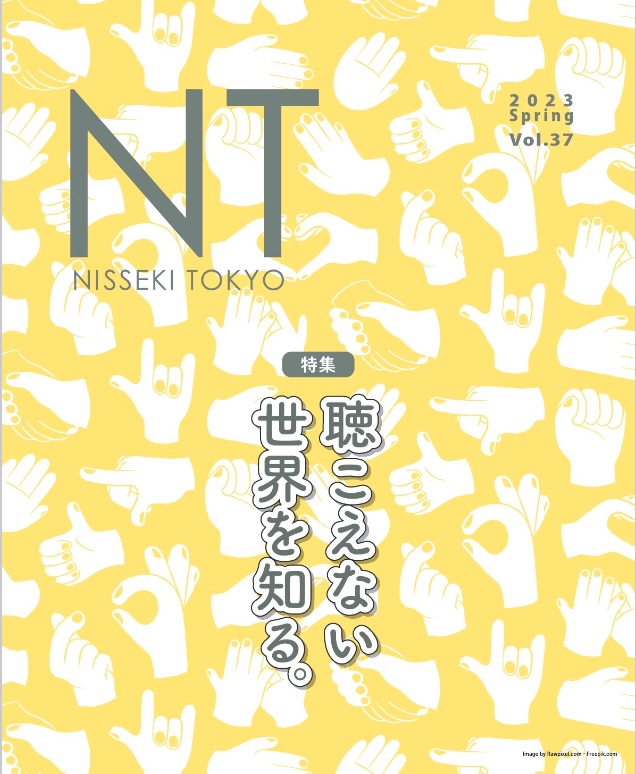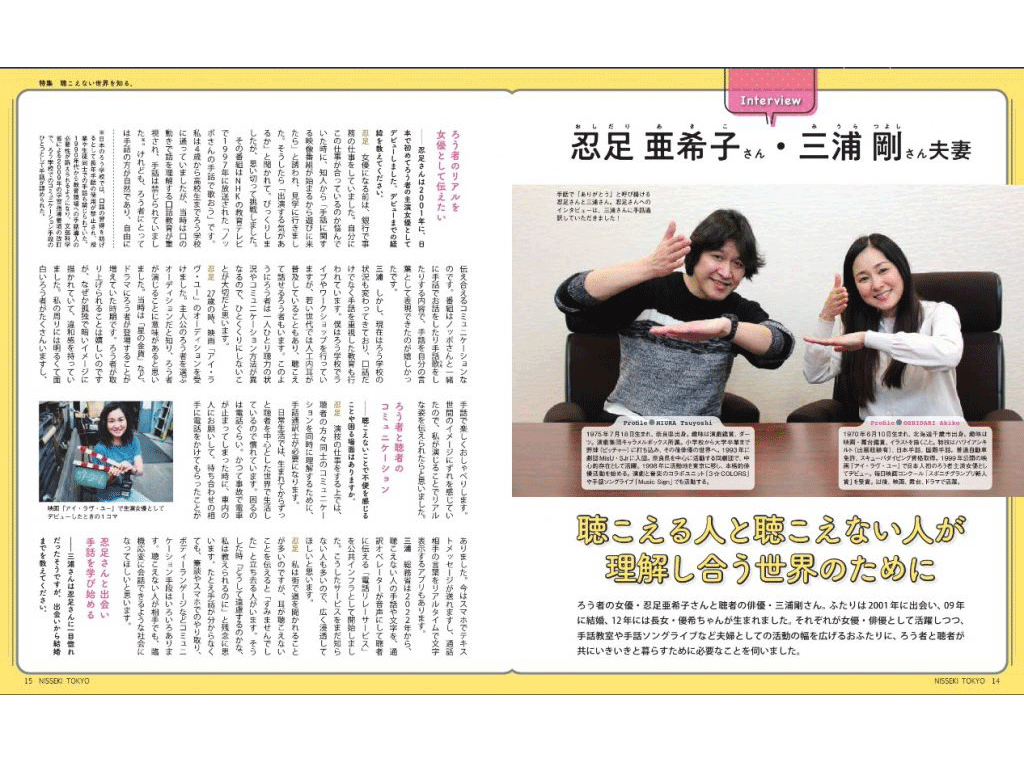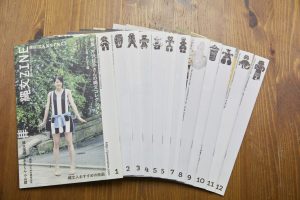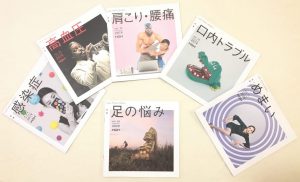──You launched Ameagari in July 2018. What made you decide to start a free paper?
Previously, when I went to Canada on a working holiday, I had a friend there who identified as X-gender and was creating a free paper. Being a member of the LGBTQ community myself and having studied photography in university, we talked about creating a free paper together when we returned to Japan.
──So, you started it together with that friend?
Yes, but after my friend returned home, they fell ill, and I ended up doing it alone. We had also started crowdfunding to raise funds, so I felt like there was no turning back. Despite being part of the LGBTQ community myself, I wasn’t really involved in the LGBTQ community and didn’t have many acquaintances there. While I knew about the term LGBTQ, being a lesbian myself, I had questions like, “What kind of people are LGBTQ?” and wanted to hear from various people. Since I enjoy writing and was interested in interviews, I’ve been able to continue.
──So, you handle everything from planning to interviews, writing, and layout all by yourself?
I have two people helping with the layout, but mostly it’s just me (laughs). Because I’m alone, I also set the theme for each issue based on my interests, but when I don’t have ideas, I sometimes ask people around me, “Do you have any themes you want to know about?” In the early days, there were few people willing to accept interviews, so sometimes I would decide on the theme after finding someone to interview.


